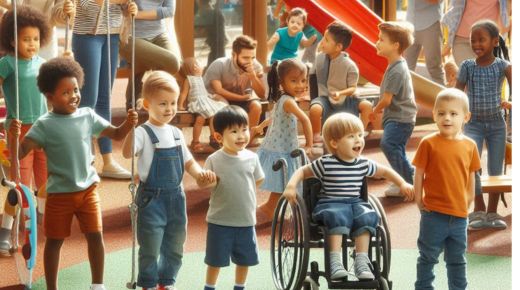Cerebral palsy (CP) is a neurological disorder that affects movement, muscle tone, and motor skills due to brain damage that occurs before, during, or shortly after birth. The impact of cerebral palsy can vary widely among individuals, making early diagnosis and intervention crucial for improving outcomes. Early intervention for cerebral palsy not only supports physical development but also enhances overall quality of life for affected children and their families.
Understanding Cerebral Palsy
Cerebral palsy is primarily caused by abnormal brain development or damage to the developing brain, which can occur during pregnancy, labor, or shortly after birth. The severity of CP can range from mild to severe and may affect different areas of the body. Symptoms may include difficulties with movement and coordination, muscle stiffness or weakness, and challenges with speech and communication.
Given the complexity of CP, a multidisciplinary approach is often required for effective management. This approach typically involves physical therapists, occupational therapists, speech therapists, and medical professionals working together to provide comprehensive care.
The Role of Early Intervention1. Timely Diagnosis
Early intervention begins with a timely and accurate diagnosis of cerebral palsy. Parents and caregivers should be vigilant for signs of developmental delays or unusual movements in infants and young children. Early signs of CP may include poor muscle control, lack of coordination, or failure to reach developmental milestones, such as rolling over or sitting up.
Once CP is suspected, a thorough assessment by a healthcare professional is essential. Early diagnosis allows for the implementation of intervention strategies that can significantly impact the child’s development.
2. Enhanced Physical Development
One of the primary goals of early intervention for cerebral palsy is to support physical development. Early rehabilitation can help children improve their mobility, balance, and coordination. Physical therapy is crucial in teaching children how to use their muscles effectively and develop strength.
Through targeted exercises and activities, therapists can help children achieve milestones, such as crawling, walking, and running. Early intervention can also prevent or reduce the impact of secondary complications, such as contractures (permanent tightening of muscles or tendons) or scoliosis (curvature of the spine).
3. Improving Functional Skills
In addition to physical development, early intervention plays a vital role in enhancing functional skills, such as self-care, communication, and social interaction. Occupational therapy focuses on helping children develop the skills needed for daily activities, including dressing, feeding, and grooming.
Speech and language therapy is equally important, particularly for children with communication difficulties. Early intervention can help children develop effective communication strategies, whether through speech or alternative methods, such as sign language or communication devices.
4. Supporting Cognitive and Social Development
Cognitive and social development are integral to a child’s overall growth. Early intervention programs often incorporate activities that promote cognitive skills, such as problem-solving and critical thinking. Engaging children in play and social interactions can also foster emotional and social development.
Support from early intervention teams can help families create enriching environments that stimulate learning and encourage social interaction with peers. This holistic approach helps children with cerebral palsy build confidence and develop essential life skills.
5. Empowering Families
Early intervention for cerebral palsy not only benefits the child but also empowers families. Families play a critical role in their child’s development and rehabilitation. Providing parents with education, resources, and support can help them understand their child’s needs and effectively advocate for appropriate services.
Support groups and counseling can also be valuable for families, offering opportunities to connect with others facing similar challenges. Sharing experiences and strategies can alleviate feelings of isolation and anxiety, creating a strong support network for families.
The importance of early intervention for cerebral palsy cannot be overstated. Timely diagnosis and intervention can significantly impact the physical, cognitive, and social development of children with CP. Through a multidisciplinary approach that includes physical, occupational, and speech therapy, children can achieve vital milestones and improve their quality of life.
Moreover, empowering families with knowledge and support is crucial for fostering a nurturing environment that promotes growth and development. By prioritizing early intervention, we can pave the way for a brighter future for children with cerebral palsy, helping them reach their full potential and live fulfilling lives. With ongoing research and advancements in treatment options, early intervention strategies will continue to evolve, offering hope for improved outcomes in the lives of those affected by cerebral palsy.
It is very important to do the necessary tests during pregnancy to avoid as many future problems as possible. Your obstetrician-gynecologist will advise you on what is needed according to your needs.

